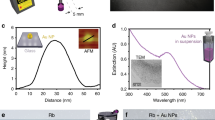Abstract
Electromagnetically induced transparency (EIT) has led to several quantum optics effects such as lasing without inversion or squeezed light generation. More recently quantum memories based on EIT have been experimentally implemented in different systems such as alkali metal atoms. In this system the excited state of the optical transition splits into several sublevels due to the hyperfine interaction. However, most of the theoretical models used to describe the experimental results are based on a Λ-system with only one excited state. In this article, we present a theoretical model for the Λ-type interaction of two light, fields and an atomic system with multiple excited state. In particular we show that if the control and probe fields are orthogonally circularly polarized the EIT effect in an alkali-metal vapor can almost disappears. We also identify the reasons of this reduction and propose a method to recover the transparency via velocity selective optical pumping.
Similar content being viewed by others
References
M. Fleischhauer and J. P. Marangos, Rev. Mod. Phys. 77, 633 (2005).
S. Harris, J. Field, and A. Imamoglu, Phys. Rev. Lett. 64, 1107 (1990).
L. V. Hau, S. E. Harris, Z. Dutton, and C. H. Behroozi, Nature 397, 594 (1999).
F. A. Beil, M. Buschbeck, G. Heinze, and T. Halfmann, Phys. Rev. A 81, 053801 (2010).
R.-B. Liu, W. Yao, and L. J. Sham, arXiv:1006.5544v1 (2010).
A. Batalov, V. Jacques, F. Kaiser, P. Siyushev, P. Neumann, L. Rogers, R. McMurtrie, N. Manson, F. Jelezko, and J. Wrachtrup, Phys. Rev. Lett. 102, 195506 (2009).
K. Hammerer, A. S. Sørensen, and E. S. Polzik, Rev. Mod. Phys. 82, 1041 (2010).
A. S. Sheremet, L. V. Gerasimov, I. M. Sokolov, D. V. Kupriyanov, O. S. Mishina, E. Giacobino, and J. Laurat, Phys. Rev. A 82, 033838 (2010).
K. Li, L. Deng, and M. G. Payne, Appl. Phys. Lett. 95, 221103 (2009).
O. S. Mishina et al., in preparation.
K. S. Choi, H. Deng, J. Laurat, and H. J. Kimble, Nature 452, 67 (2008).
Y. Chen, X. G. Wei, and B. S. Ham, Opt. Express 17, 1781 (2009).
J. Cviklinski, J. Ortalo, J. Laurat, A. Bramati, M. Pinard, and E. Giacobino, Phys. Rev. Lett. 101, 133601 (2008).
J. Ortalo, J. Cviklinski, P. Lombardi, J. Laurat, A. Bramati, M. Pinard, and E. Giacobino, J. Phys. B: At. Mol. Opt. Phys. 42, 114010 (2009).
Author information
Authors and Affiliations
Additional information
The article is published in the original.
Rights and permissions
About this article
Cite this article
Mishina, O.S., Scherman, M., Lombardi, P. et al. Enhancement of electromagnetically induced transparency in room temperature alkali metal vapor. Opt. Spectrosc. 111, 583–588 (2011). https://doi.org/10.1134/S0030400X1111021X
Received:
Published:
Issue Date:
DOI: https://doi.org/10.1134/S0030400X1111021X




